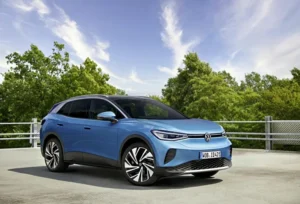How Tata Motors’ CNG Cars Surge Ahead While EVs Lag Behind

V3Cars
Strong Financial Performance in Q1
Tata Motors, India’s leading electric passenger vehicle (PV) manufacturer, reported a significant financial boost for the first quarter (April-June) of FY25. Net profit surged by 73.8% to ₹5,566 crore, while revenue increased by 5.7% to ₹1,08,048 crore.
CNG Vehicles Outpace EVs
In this quarter, Tata Motors saw its CNG vehicles outperforming their electric counterparts, emerging as the company’s primary alternative fuel option. This shift occurred amid the challenges posed by the reduction of government subsidies for electric vehicles (EVs) and a decrease in demand for electric passenger vehicles. EV sales for Tata Motors fell by 14% year-on-year (y-o-y) to 16,579 units for the quarter ended June, with a further decline of 21% in July. Conventional passenger vehicle (PV) sales also experienced a 6% y-o-y drop in Q1. Despite these challenges, Tata Motors achieved notable revenue and profit growth, driven by the performance of its luxury car unit, Jaguar Land Rover.

Impact of FAME-II Incentive Withdrawal
The absence of the FAME-II incentives, which expired on March 31, 2024, has affected fleet sales, a significant portion of Tata Motors’ EV portfolio. Group CFO P.B. Balaji highlighted that the removal of these subsidies, which had provided incentives for fleet customers purchasing EVs, has impacted sales. Fleet customers such as Uber and BluSmart contribute to 20% of Tata Motors’ total EV volumes. Balaji expressed optimism about recovery, noting that the upcoming festive season and new product launches should stimulate demand.
CNG Models Gain Market Share
CNG vehicles now represent 22% of Tata Motors’ total sales in Q1, up from 16% in the previous quarter. This increase underscores the growing importance of CNG models in Tata Motors’ portfolio, as the electric four-wheeler segment remains outside the demand-subsidy framework.

Jaguar Land Rover and Other Business Segments
Jaguar Land Rover, Tata Motors’ British luxury car subsidiary, saw a 5.4% increase in sales, benefiting from improved EBIT margins and a favorable product mix. The commercial vehicle (CV) segment also experienced a 5.1% revenue growth. However, the passenger vehicle segment faced a 7.7% revenue decline, despite a slight improvement in EBITDA margins to 5.8%. The overall performance was bolstered by strong JLR sales, an optimized product mix, and reduced raw material costs.

Looking Forward
Industry experts noted that retail demand for EVs remains challenging, both in India and globally. The removal of subsidies for fleet sales has also impacted the market. However, with several competitors planning new EV launches and anticipated changes in incentives, there is cautious optimism for recovery. Tata Motors expects a rebound in demand, especially with the upcoming festive season and potential new FAME incentives.
Will Ola’s Lower-Valuation IPO Succeed?

I am Praveen Kumar, a 21-year-old passionate about writing and staying informed. On CNA Times, I bring the latest news and updates, offering readers accurate and insightful information with my expertise and dedication.






